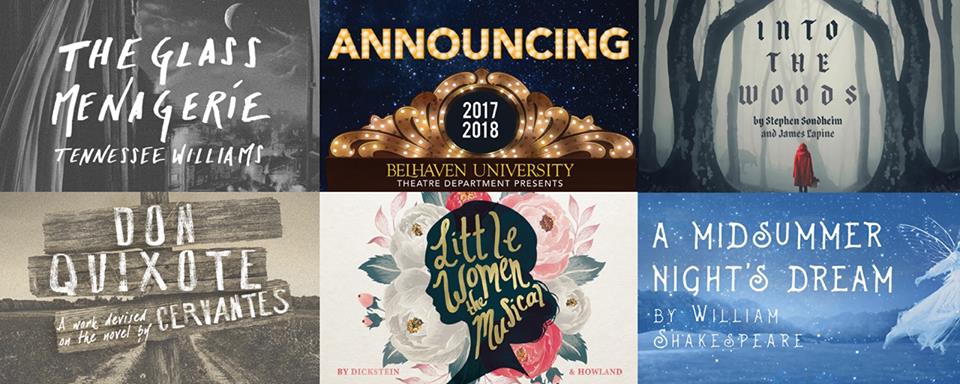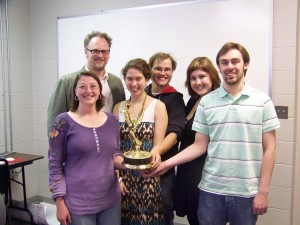We were honoured the last 3 weeks to have Kate Pierson in residence as our Guest Costume Designer. Kate is a gifted Costumer Designer from the Northwest US and was willing to make the trip to Belhaven in the Deep south and collaborate with us on our current production of Juliet and her Romeo.
I wanted to share her design notes with you and a pictorial form of the costume plot for the show because I think it demonstrates what a challenge this show was to design and chart especially from a costuming standpoint and how a story and concept can be told and supported by the design elements of a production. Enjoy.
Juliet & her Romeo — Designer Notes
How to dress 8 actors playing 25 roles that are changing in every scene?
Juliet & her Romeo has been one of the most challenging designs I have ever done due to the sheer complexity of the logistics of fitting many different sized bodies into one costume and still retain the believability of character and fluidity of movement for the play.
The first directives that were given to me consisted of ideas of exploration, movement and flight; I wasn’t bound by a time or place, or by a color palette that depicted familial ties (which is often used in costumes for Romeo & Juliet). Combined with the complexity of the actor/scene/character changes I knew I had to find a style that would support the nature of the play as well as offer some flexibility of style…Steampunk occurred to me fairly early on.
I believed the romantic yet edgy nature of the steampunk style, which melds together the future with the past worked well with the multifaceted direction of the director’s vision. Because any particular costume piece needed to be worn by several actors as well as be easily donned and doffed I gave them an industrial and romantic functionality to the costumes; using basic black dancewear as the background canvas, adaptable pieces such as coats and vests fronts and a wide range of accessories and costume props with lots of embellishment the costumes became useful tools to help identify the characters.
-

-
Act 1_Scene3
-

-
Act1_Scene1
-

-
Act1_Scene1-2
-
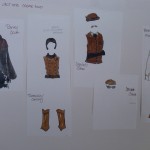
-
Act1_Scene2
-

-
Act1_Scene4
-
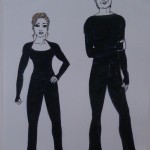
-
Act1_Scene5
-

-

-
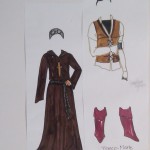
-
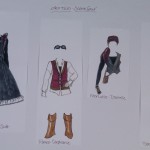
-

-

-

-
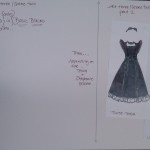
-
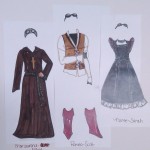
-
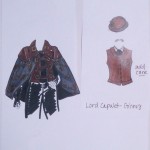
-
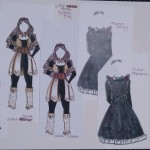
-
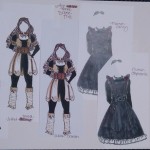
-
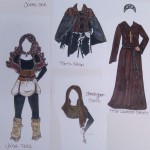
-
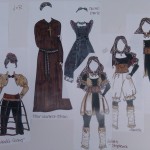
-

-
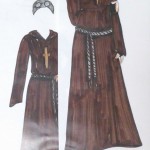
-
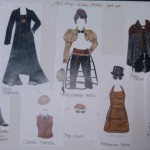
-

Steampunk
is a sub-genre of science fiction, alternate history, and speculative fiction that came into prominence during the 1980s and early 1990s.[1] Specifically, steampunk involves an era or world where steam power is still widely used—usually the 19th century and often Victorian era Britain—that incorporates prominent elements of either science fiction or fantasy. Works of steampunk often feature anachronistictechnology or futuristic innovations as Victorians may have envisioned them; in other words, based on a Victorian perspective on fashion, culture, architectural style, art, etc. This technology may include such fictional machines as those found in the works of H. G. Wells and Jules Verne or real technologies like the computer but developed earlier in an alternate history.
Other examples of steampunk contain alternate history-style presentations of “the path not taken” for such technology as dirigibles, analog computers, or such digital mechanical computers as Charles Babbage‘sAnalytical engine.
Steampunk is often associated with cyberpunk. They have considerable influence on each other and share a similar fan base, but steampunk developed as a separate movement. Apart from time period and level of technology, the main difference is that steampunk settings tend to be less dystopian.
Various modern utilitarian objects have been modded by individual artisans into a pseudo-Victorian mechanical “steampunk” style, and a number of visual and musical artists have been described as steampunk.
–Wikipedia
Again Thank you to Kate and all her hard work and effort in collaborating and helping us produce this production. Please forgive me for the cell phone photos of the renderings they really are beautiful!
